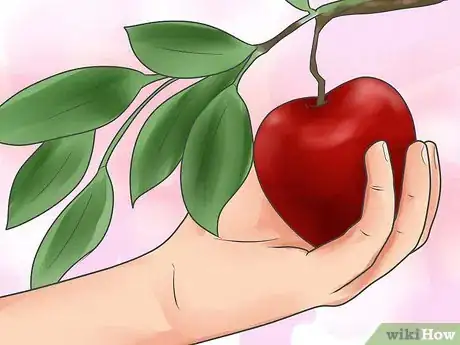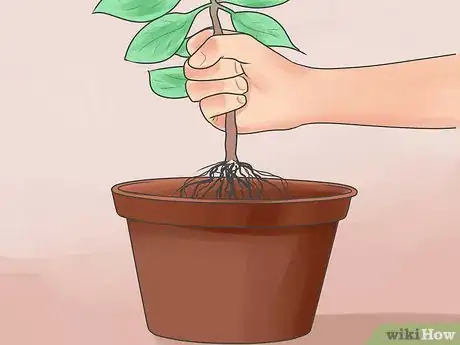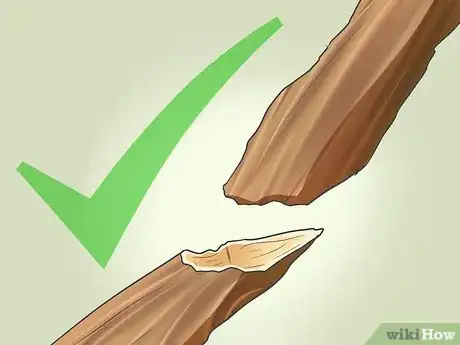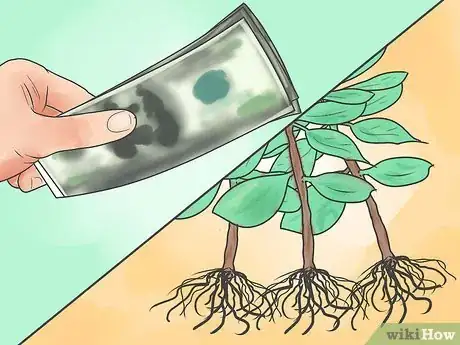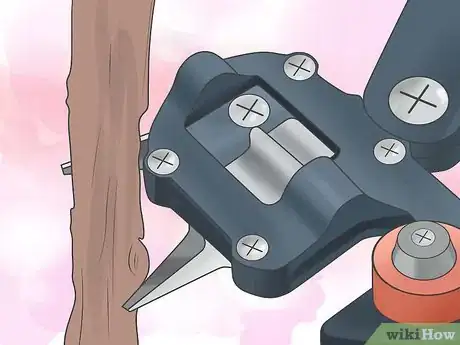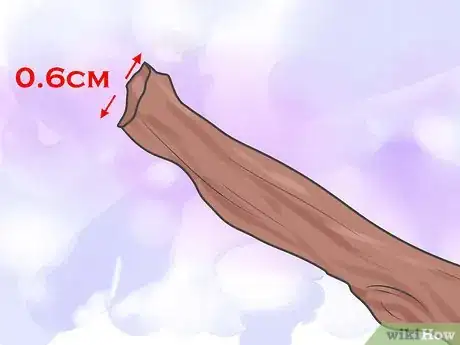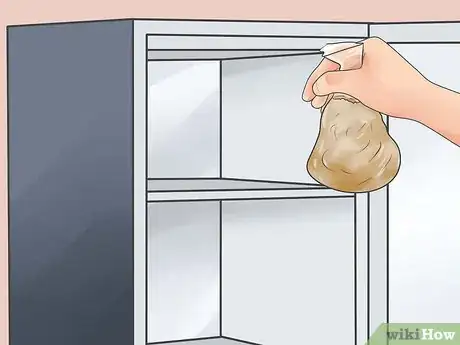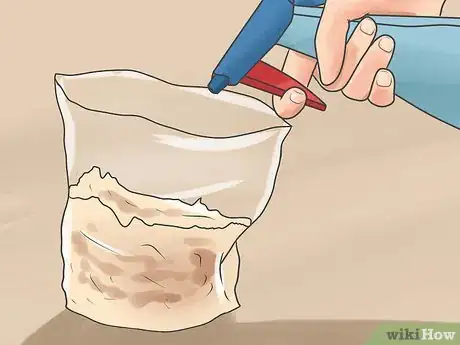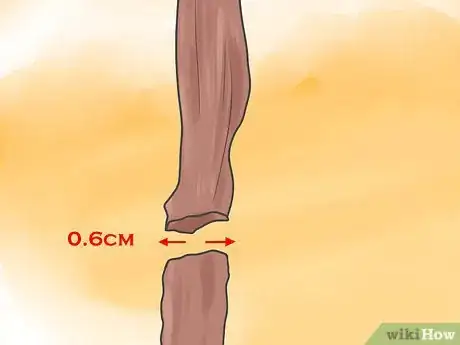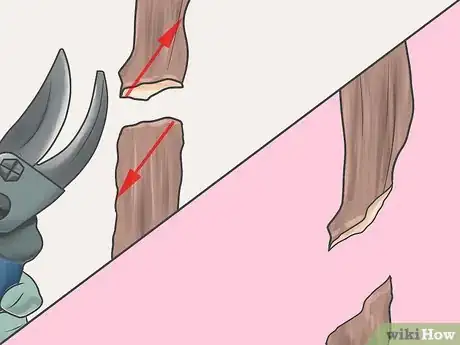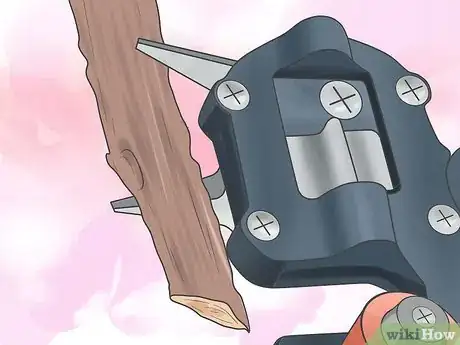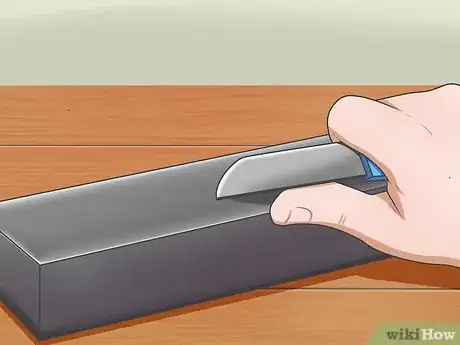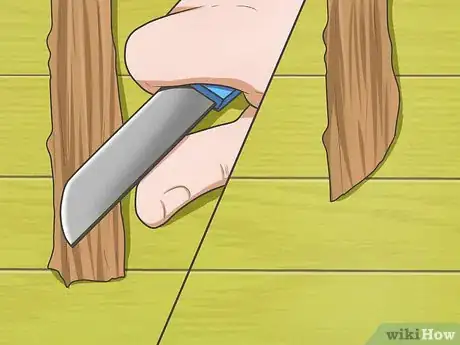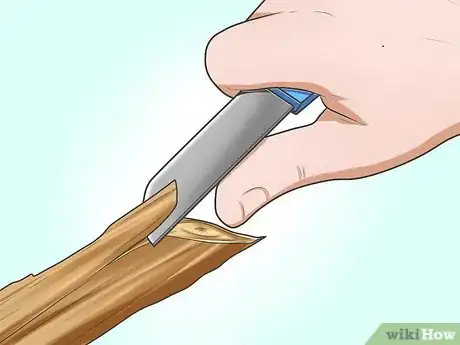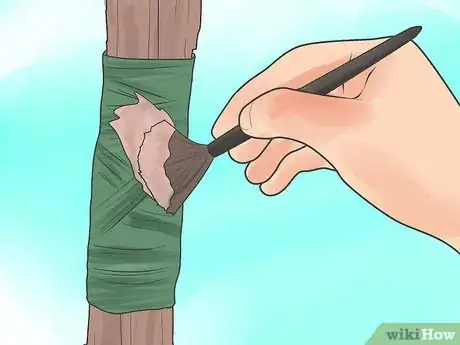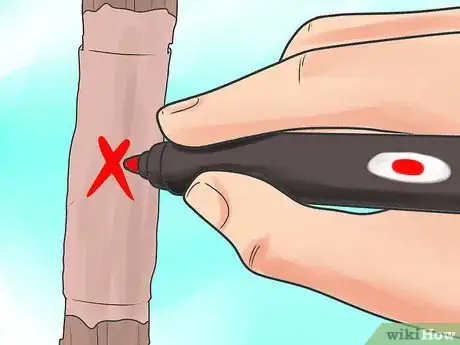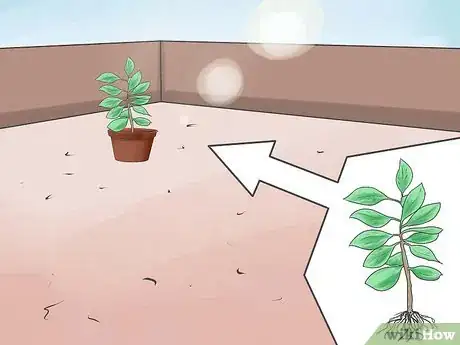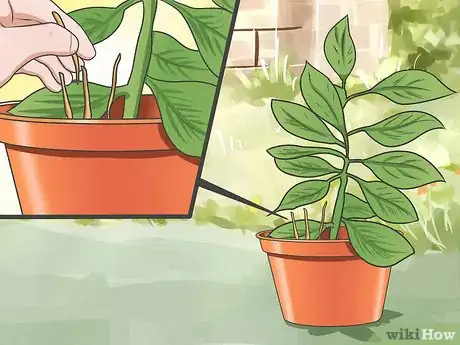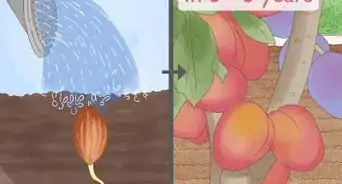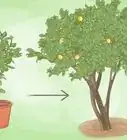wikiHow is a “wiki,” similar to Wikipedia, which means that many of our articles are co-written by multiple authors. To create this article, 11 people, some anonymous, worked to edit and improve it over time.
This article has been viewed 147,834 times.
Learn more...
Grafting trees involves combining a bottom rootstock of one tree to the scion, or budding branch, of another tree to make a successful fruit tree. Apple trees are often considered the best starting place for learning to graft trees. Apple seeds, once planted, don’t produce fruit that is identical to the apple they came from so grafting allows you to reproduce the apples of our choice. Start with this method of branch grafting and practice your cuts until you make a successful graft.
Steps
Picking Rootstock
-
1Plant apple trees that are known to grow well in your area. The rootstock must be hardy in your area.[1] You can plant an apple tree from seedling to use as rootstock, but you will have to wait several years to create a sturdy plant.
- Rootstock must be suited to your climate and local insects.
-
2Opt to purchase rootstock in place of seedlings. Ask your local nursery about purchasing rootstock. This is the best way to ensure your type of rootstock is well suited to grafting.
- Discuss the varieties of scion that work well with the type of rootstock you buy when you purchase the stock from the nursery.
Advertisement -
3Plant rootstock in pots until you are ready to use it. Keep it moist, in cool conditions through the winter. Although rootstock is sold when it is a few years old, it can be purchased just before you graft.
-
4Ensure your rootstock and scion will be compatible in diameter. The diameters of the branches have to match; however a graft with a thinner scion might be successful, as well.
-
5Buy several root stocks at once. Grafting success increases with practice, so you may need to cut several scion and rootstock branches before you are successful.
Cutting Scions
-
1Cut scion branches in the fall or winter. You can store them until the next spring, when they will be ready to bud and plant. You want to have scion branches that are harvested above freezing but when the apple tree has already fallen dormant.
-
2Snip one year old branches from apple trees.[2] Use sharp shears. Wash the shears with alcohol before harvesting different types of scions.
-
3Choose scion branches that have three or more buds and are one-quarter inch (0.6cm) thick.[3]
-
4Opt to purchase scions instead of harvesting them yourself. Nurseries or mail order services can send you scion branches to store until you are ready to graft.
-
5Moisten some sawdust or sphagnum moss. Place it in a large freezer bag. Add the scions to the plastic bag to store in the refrigerator until you are ready to graft.
-
6Open and spray the bag with water occasionally to ensure your scions do not dry out.
Bench Grafting Apple Trees
-
1Graft your apple trees early in the spring just before the buds of the rootstock tree are ready to open. This is often between April and May, but will depend greatly on your climate.[4]
-
2Choose a rootstock that is one-fourth inch (0.6cm) thick. It should be the same size as your scion.
-
3Plan to cut the end of the rootstock at an upward angle. Then, you will cut the end of the scion at a downward angle so that the remaining buds are above the grafted section.
-
4Clip off the bottom of the scion, above where the branch has died. Use clean, sharp shears. You need to expose fresh, green cells or cambium on both scion and rootstock to graft successfully.
-
5Sharpen your grafting knife or paring knife. A sharp knife increases the chances of a graft.
-
6Cut the bottom of the scion at an acute angle downward. The cut should be approximately one inch (2.5cm) in length. Ensure you have three good buds above the cut.
-
7Make a corresponding cut in the top of the rootstock. Cut upward at an acute angle. When you place the two branches together, they fit together as though they were one branch.
-
8Cut tongues in each end. This allows the cambium cells to contact each other on at least two points. They slide together to form a sturdy union.
- Cut the rootstock tongue groove approximately one-third the way down the previous cut. You will need to cut downward, in the opposite direction of your previous cut, to make an interlocking groove.
- Cut the scion stock one-third the way down in an upward angle.
- Rock the knife down the grove slowly so that it doesn’t slip and you don’t cut yourself.[5]
-
9Interlock the tongues between the rootstock and the scion. You will need to slowly slide the cambium, or green portion of one branch, into the cambium of the other branch. The grafted portion should be fairly stable.
-
10Wrap the conjoined area with floral tape or masking tape. Leave the end sticking out so that you don’t need to cut through the grafted area to free it when the graft starts to grow.
-
11Paint the tape with parafilm or grafting wax.
-
12Snip the scion above the top, third, bud at a 45-degree angle. Seal the top with wax as well.
-
13Label the scion immediately, so that you know what you have grafted.
Planting Grafted Trees
-
1Plant the rootstock in pots. Keep them in a cool, moist area. They can also be packed into sphagnum moss in a plastic bag and moistened until they are planted.
-
2Store them in a temperature between 36 and 42 degrees Fahrenheit (2.2 to 5.5 degrees Celsius). They will need to remain in this climate for two to four weeks.
-
3Plant your rootstock in a safe place where you can watch the trees carefully for signs of insects, deer or other damage. It should be in full sunlight.
-
4Remove any shoots that extend from the rootstock. You want the scion to flourish, but you don’t want the rootstock to take over.
- At first, you can leave some leaves on the rootstock so that nutrients keep flowing up the tree until the graft is successful. However, if you see an actual branch start to form on the trunk of the rootstock, remove it; this will help encourage the scion to grow.
- Once the scion really starts to grow and new leaves appear above the graft, remove any further growths from the rootstock, below the graft. This removal will help the plant thrive with growth on the scion, rather than the rootstock. The rootstock will keep trying to grow its own branches, and you need to remove them for as long as the tree lives.
Community Q&A
-
QuestionHow do I graft a bud?
 Community AnswerJust cut below the bark to remove the bud, barely cutting into any wood. Try not to cut into the pith or heartwood of the branch. Select a relatively same-sized branch on the tree that you want to graft on to. Remove any leaves or side branches on that branch where you will be inserting the new bud.
Community AnswerJust cut below the bark to remove the bud, barely cutting into any wood. Try not to cut into the pith or heartwood of the branch. Select a relatively same-sized branch on the tree that you want to graft on to. Remove any leaves or side branches on that branch where you will be inserting the new bud. -
QuestionWhy do people graft fruit trees?
 Community AnswerGrafting is often done to produce fruit that is "true to form." If you find a tree that produces the best fruit you've ever had, planting its seeds may not produce another tree with fruit that is the same. Sometimes it can be very different. Taking a cutting from the original tree instead and grafting it will produce a tree that is genetically identical, so the fruit will be just like the original. Grafting and training can also produce fruit years sooner. Dwarfing rootstock can produce a tree that is easier to harvest. The rootstock you choose may also produce a tree that is significantly more resistant to pests and diseases.
Community AnswerGrafting is often done to produce fruit that is "true to form." If you find a tree that produces the best fruit you've ever had, planting its seeds may not produce another tree with fruit that is the same. Sometimes it can be very different. Taking a cutting from the original tree instead and grafting it will produce a tree that is genetically identical, so the fruit will be just like the original. Grafting and training can also produce fruit years sooner. Dwarfing rootstock can produce a tree that is easier to harvest. The rootstock you choose may also produce a tree that is significantly more resistant to pests and diseases. -
QuestionCan I graft an apple onto a plum?
 Community AnswerNo. You can generally only graft between members of the same genus. Apples can often be grafted to quinces, or even pears, but not to stone fruits.
Community AnswerNo. You can generally only graft between members of the same genus. Apples can often be grafted to quinces, or even pears, but not to stone fruits.
Things You'll Need
- Apple tree rootstock
- Apple tree scion
- Paring knife
- Parafilm/grafting wax
- Floral tape/masking tape
References
About This Article
Grafting an apple tree involves combing the bottom rootstock of one tree to the scion of another. A scion is a living bud or shoot of a tree used in grafting. To do this, cut your scion branch in the fall or winter when it’s ready to bud and store it until the spring. Choose a scion branch with 3 or more buds. Graft your tree early in the spring, just before the buds of your rootstock tree are ready to open. Choose a rootstock that grows well in your area to give it the best chance of survival. It should also be the same thickness as your scion. When you’re ready to graft, cut both the rootstock and scion at the same angle so they fit together. Wrap them in floral or masking tape to secure them. For more tips, including how to plant and care for your grafted apple tree, read on!
